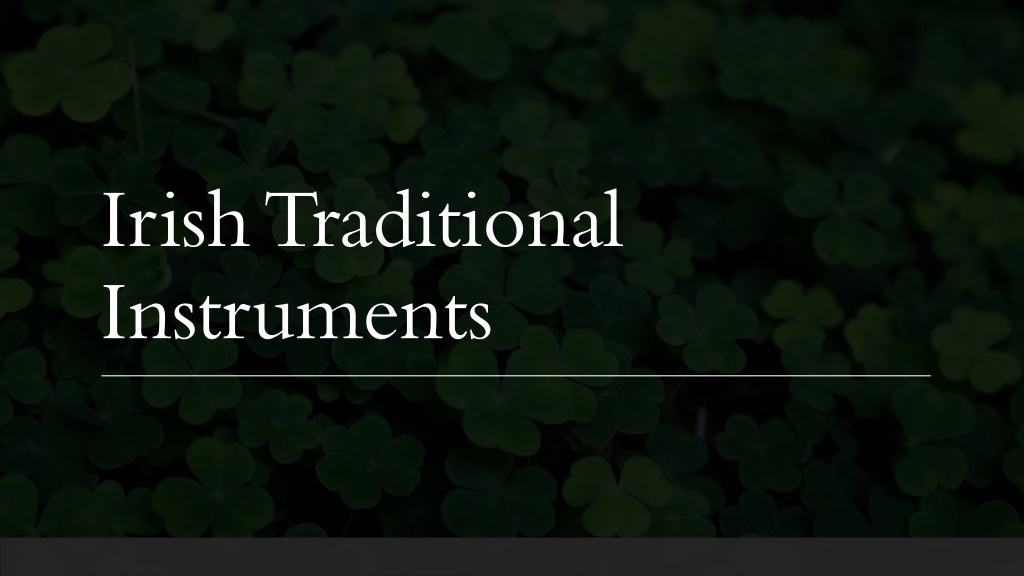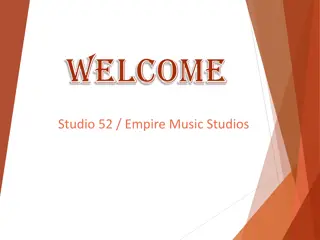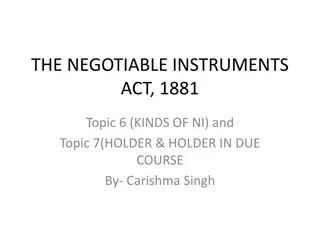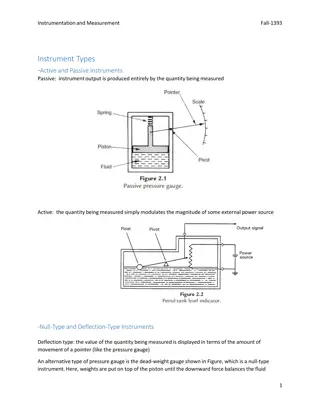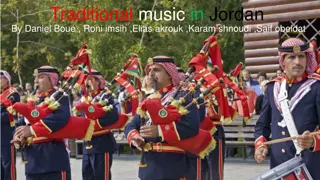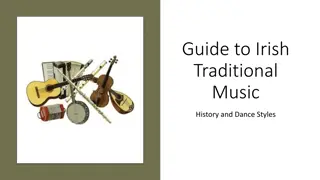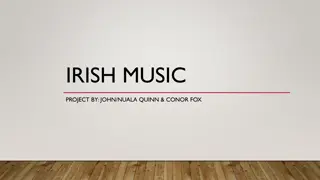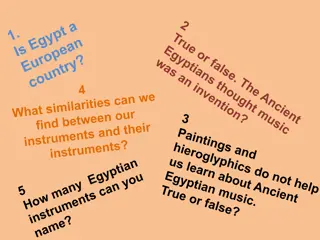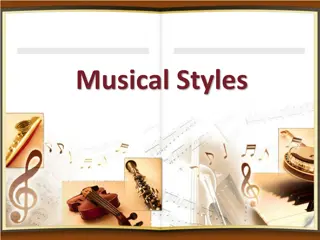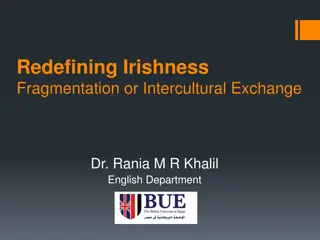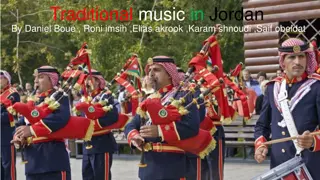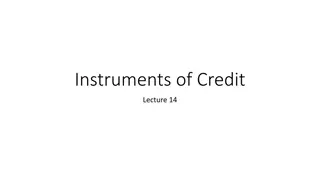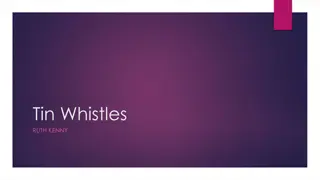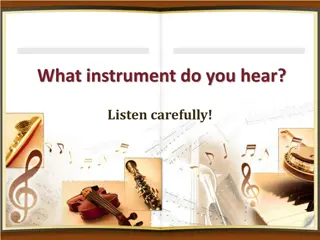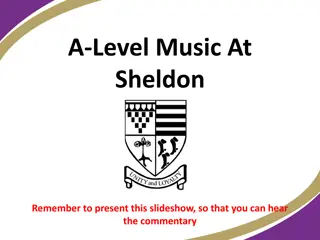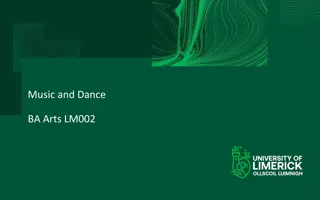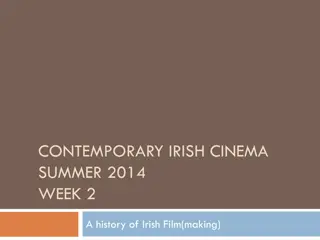Explore Irish Traditional Instruments and Music
Discover the diverse world of Irish traditional instruments such as the Flute, Fiddle, Tin Whistle, Low Whistle, Uilleann Pipes, Accordion, Concertina, Bodhrán, and Harp. Learn about the history and unique characteristics of these instruments, as well as the evolution of Irish music to include modern instruments like the Guitar, Bouzouki, Mandolin, Banjo, Harmonica, and Piano. Immerse yourself in the rich cultural heritage and melodious sounds of Irish music.
Download Presentation

Please find below an Image/Link to download the presentation.
The content on the website is provided AS IS for your information and personal use only. It may not be sold, licensed, or shared on other websites without obtaining consent from the author. Download presentation by click this link. If you encounter any issues during the download, it is possible that the publisher has removed the file from their server.
E N D
Presentation Transcript
Irish Traditional Instruments
The Main Irish instruments are Flute, Fiddle, Tin Whistle, Low Whistle, Uilleann Pipes, Accordion, Concertina, Bodhr n and Harp. Instruments Nowadays the Guitar, Bouzouki, Mandolin, Banjo, Harmonica and Piano are also commonly heard in Irish music.
The Tin Whistle The Tin Whistle is also known as the penny whistle and the fead g. It is a small wind instrument with a thin, high pitched sound. It is mentioned as far back as the 3rd century in Irish historical documents.
The Low Whistle The Low whistle is another tin whistle, but larger. This results in the sound being lower in pitch and more mellow than the smaller whistle. Many pipers play the low whistle as the large stretches between the holes are very similar to the stretches between the holes on the chanter of the Pipes.
The Irish Flute The Irish Flute is made out of wood and does not have keys which separates it from the classical silver flute played in other countries. . The player blows across the mouthpiece when playing the flute as opposed to blowing into it. It has a windy and velvety sound.
The Accordion The Accordion is a bellows operated reed instrument on which the melody notes are articulated by buttons played by the right hand, bass notes by those on the left. The piano accordion became highly popular during the 1950s and has flourished to the present day in c il bands and for old time Irish dance music.
The Concertina The Concertina is a Hexagonal, button operated reed and bellows instrument played with the fingers of both hands. It has 1 reed per note. Each of the 30 buttons has a different note on press and draw (2 notes per button). The sound of the Concertina is thinner than the Accordion.
The Fiddle The Fiddle is one of the most important instruments in Irish music The fiddle itself is identical to the violin however it is played differently in widely-varying regional styles. Irish fiddle playing is direct with little use of vibrato except for slow airs. Vibrato is used sparingly. Bowing styles differ around the country.
Uileann Pipes The Uilleann pipes is the Irish form of the bagpipes. It emerged in the first half of the 18th century in Ireland and Britain and was developed to its modern form in Ireland over the following 50 to 60 years. It is the most highly developed of all bagpipes, having a chanter capable of sounding two full octaves, as well as other features not found on other bagpipes.
Irish Harp The Irish harp is a square harp traditional to Irelands known as cl irseach in Irish. It is a wire-strung instrument with wires attached to a massive soundbox typically carved from a single log, commonly of willow, although other woods including alder and poplar have been. The harp also has a reinforced curved pillar and a substantial neck, flanked with thick brass cheek bands. The strings, usually played with the fingernails, produced a brilliant ringing sound.
Bodhrn The Bodhr n is an Irish drum that has existed for thousands of years. It consists of a circular frame with a skin stretched over one face. The traditional bodhr n drum featured wooden frames that were made from green wood. The drums tend to be just over a foot in diameter, and they can be as shallow as three inches, or as deep as eight or more.
